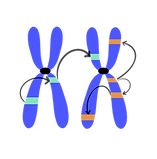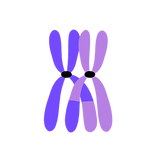Research at the Wei Lab
The Wei Lab conducts cutting-edge research in genetics and genomics, with a specific focus on understanding selfish genetic elements such as transposable elements and meiotic cheaters. Our team of Drosophila aficionados is uncovering the molecular, evolutionary, and genetic basis underlying the complexity of genome architecture, phenotypic diversity, sexual dimorphism, and developmental regulation.
Key Areas of Research

Transposable
Elements

Meiotic Recombination

Sex Chromosomes

Mendelian Cheaters
Research Synopsis
The genome is often characterized as an intricate, well-oiled machine, evolved to have optimized parts working in harmony. This is far from the reality. The genome is littered with genes and DNA sequences that not only have no function but are actively harmful to the rest of the genome and the organism. Transposable elements, or jumping, genes are commonly regarded as selfish genetic elements, as they can move around and make copies of themselves. But in doing so, they create mutations that can cause breaks in the DNA and destroy gene function. Therefore, their replicative nature threatens the integrity of the genome. Yet, they are also highly ubiquitous, often making up large fractions of eukaryotic genomes (e.g. 50% of the human genome). The Wei Lab seeks to understand the profound impact these selfish genetic elements have on the genome and the organism. How does the genome combat their deleterious activities to maintain organismal fitness and reproductive health? How do these elements contribute to genome instability and diseases? And how do they drive changes in the genome across deep evolutionary time?
The Wei lab is interested in how fundamental genetic and developmental processes evolve. While we expect functional importance to necessitate conservation at the genetic level, this is often not the case, and even essential genes and pathways can look very different between closely related species. One of the main drivers of this dichotomy is the existence of selfish genetic elements: these are genes or DNA sequences that have no purpose other than to propagate in genomes even if detrimental to the host organism. The prime example is transposable elements that make copies of themselves and move around the genome, and, in doing so, can cause devastating mutations and genome instability. Another example is meiotic drivers which are genes that hijack meiotic pathways to bias their own transmission to the next generation; but their action is often at the expense of segregation fidelity and host fecundity.
These selfish genetic elements are in a constant cat and mouse game with the genome. Genomic defense mechanisms target them for silencing them while they evolve ways to evade the suppression; this, in turn, puts selective pressure on the genome to adapt in order to re-establish control and maintain genome integrity. This dynamic creates what’s known as a genetic arms-race. The Wei lab seeks to understand the profound impacts these arms-races have on shaping genome architecture and developmental processes like meiosis, embryogenesis and germline development.
We use Drosophila as a model system. But, in addition to the typical lab species, Drosophila melanogaster, we take advantage of the tremendous genetic and species diversity across the entire genus to catch “evolution in action”. Our integrative approach combines genomics, genetics, population, molecular and developmental biology to understand these processes and what drives them to evolve. The wealth of genetic and genomic resources in addition to the tremendous species-diversity make the Drosophila genus as a whole extremely powerful in revealing deep and generalizable insights.
Plus, flies are SUPER cool!
